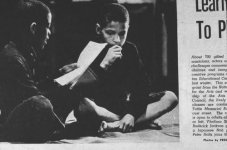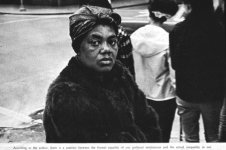Reversal (slide) film has finer grain, higher resolution and better sharpness compared to negative films of the same speed.
Velvia 50, Velvia 100, Provia 100F, AgfaPhoto CT Precisa 100 deliver all that. With this better detail rendition compared to Ektar 100, Portra 160 you can make bigger enlargements from reversal films.
Concerning contrast:
A slide on a light box or in projection has a higher Dmax / bigger contrast range (more stops) than a print from a colour negativ.
Concerning accurate colors:
Two aspects are very important:
1. If you want most neutral, natural, precise colours than Provia 100F / AgfaPhoto Precisa are currently the best films on the market.
Followed by Fuji Pro 400H (which is slightly on the warm side).
If natural/neutral colors are needed, you have to exclude all current Kodak negative films, because they all have a significant bias on yellow and a warm colour rendition (that is general policy at Kodak, the films are designed that way). This Kodak design also leads often to a certain cyan cast in blues with Kodak films.
2. With reversal film you already have a finished picture after development. With a proper development the results are perfect.
Send identical exposed slide films to several excellent labs and your results will be all
identical.
Therefore you have a perfect accuracy in terms of reliability and consistancy.
But that is not the case with colour negative film:
After development you need prints and / or scans to have a usable, finished picture. Scanning / printing are interpretation processes. And therefore depending on the lab operator, the scanner, the software, the printing paper you will get different results.
Send identical exposed CN films to several excellent labs and your results (scans, prints) will be all
different.
All the reasons above (and several more) are the reasons why in professional photography reversal film has been the preferred medium (in most cases exclusively used) for decades.
It is correct that negative film has more exposure latitude than reversal film, but
1. Negative film has
no latitude concerning the other important quality parameters:
If you underexpose it, you get significantly more grain, worse sharpness and resolution, lack of shadow detail.
If you overexpose it, you are loosing sharpness, resolution and highlight detail. And you get colour shifts.
Result:
If you want optimal quality concerning all quality parameters, you have expose right. There is no difference concerning that between negative and positive film.
2. Getting a correct exposure is easy. For decades we have excellent metering systems in our cameras.
3. There are lots of excellent tools to manage even very high contrasts before / with exposure:
Fill-in flash, gradual filters, pre-exposure / pre-flashing, pol filter.
Get it right before you press the shutter. Then you don't need post-processing.
Concerning scanning of reversal film the following aspects are important:
1. One further big advantage of reversal film is, you don't need to scan. After development you already have a perfect, finished picture. Look at it on a light box with an excellent slide loupe or in projection and you have a much much better quality than any (scanned) picture on a computer monitor.
2. Next advantage: With the slide you always have a reference, the original. You know how the scan have to look. That is impossible with colour negative film, because our brain cannot convert the negative colours.
3. Most scanners (with the exception of drumscanners) increase film grain by scanner noise. Therefore you benefit with reversal film from its finer grain (see above).
4. Reversal films have a very high contrast range (high Dmax). Most cheap scanners cannot fully record this high Dmax.
5. With drumscanners you can even get lots of detail from strongly under- or overexposed slides.
For example have a look here (scroll down to the portraits):
https://www.fineartdrumscanning.de/bilder/
Cheers, Jan



